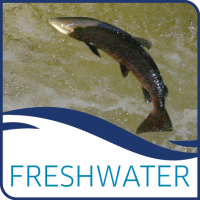These data underpin Figure 3, Table 3 and Appendix B of Willem B. Buddendorf, Faye L. Jackson, Iain A. Malcolm, Karen J. Millidine, Josie Geris, Mark E. Wilkinson, Chris Soulsby, Integration of juvenile habitat quality and river connectivity models to understand and prioritise the management of barriers for Atlantic salmon populations across spatial scales. STOTEN (2019), 655, 557-566 https://doi.org/10.1016/j.scitotenv.2018.11.263 The data show the increase in river connectivity that would result from the removal of impassable manmade barriers (IMBS) and thus provides a basis for assessing the impact of barriers on Atlantic salmon and the potential benefits of barrier removal / easement. By ranking the connectivity scores it has been possible to develop an aproach for prioritising management action. The connectivity metric "Delta DCIScot(%)" is the percentage increase in national connectivity that is obtained where a barrier is removed, assuming all barriers downstream have also been removed. Cumulative gain is the potential gain in delta DCIScot if this barrier and all downstream IMBs are removed; if there are no IMBs downstream then cumulative gain is equal to delta DCIScot. The connectivity metric used here is weighted by predicted salmon fry density obtained from the benchmark model presented by Iain A. Malcolm, Karen J. Millidine, Ross S. Glover, Faye L. Jackson, Colin P. Millar, Robert J. Fryer (2019) Development of a large-scale juvenile density model to inform the assessment and management of Atlantic salmon (Salmo salar) populations in Scotland, Ecological Indicators, Volume 96, Part 1, 2019, Pages 303-316. This contrasts with other approaches where the weighting is based on wetted areas or river length.
Data and Resources
- Habitat ranking of impassable mand-made barriers to fish migrationcsv
Unique catchment identifier - the SEPA catchment code (unique) and SEPA...
Preview Download
| Field | Value |
|---|---|
| Publisher | |
| Modified | 2020-01-07 |
| Release Date | 2018-11-28 |
| Identifier | cbddd853-364b-4bbd-aa20-f968680bdb89 |
| License | UK Open Government Licence (OGL) |
| Public Access Level | Public |


